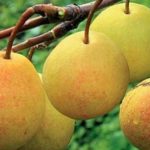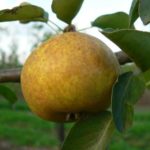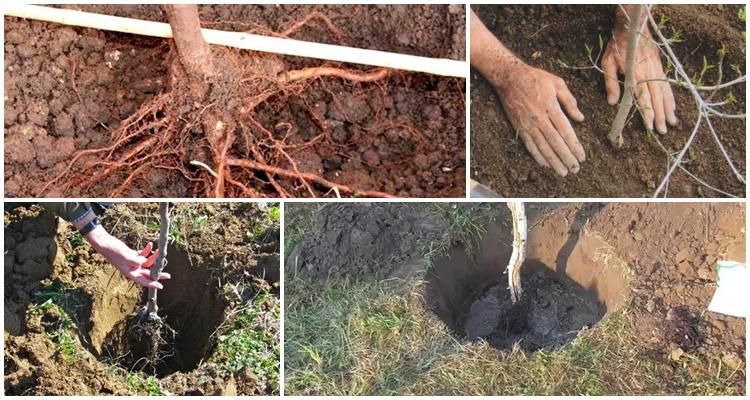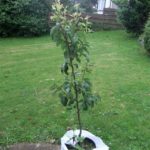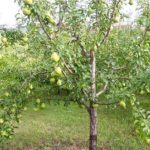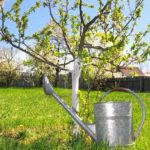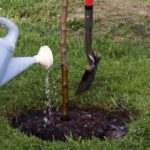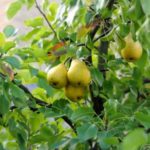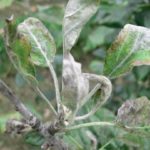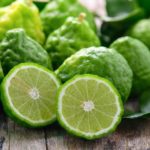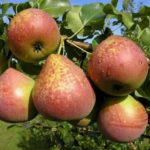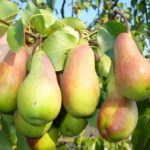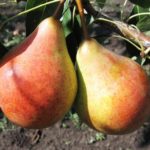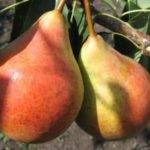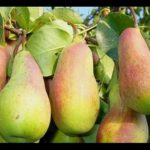Bergamot pears were bred in Italy and are actively grown in Europe and Russia. The varieties are combined into one group because they have fruits of the same type - round and slightly flattened. Let's consider the description and characteristics of these trees, their advantages and disadvantages, features of planting, cultivation and care. How to protect a pear from diseases and pests, when you can pick the fruits and how to store them correctly.
Description and characteristics of the tree
Russian breeders adapted southern varieties to the cold climate; through their efforts, cold-resistant varieties were developed, for example, Moscow Bergamot. But most often such pears are grown in the warm climate of southern Russia.
Bergamot trees grow to medium height, grow quickly, and form a pyramidal but spreading crown. Pears are high-yielding, bear fruit consistently, and produce up to 150 kg of fruit per tree. The plants are moisture-loving; with a lack of moisture, pears become small and lose their taste. Trees bear fruit late; the first fruits can be harvested 6-7 years after planting. The duration of fruiting is more than 20 years.
Bergamots are considered self-fertile and can bear fruit without pollinators, but if you want to get a larger harvest, you need to plant varieties with the same flowering period next to the pears, for example, Tonkovetka and Bessemyanka.
Pros and cons of Bergamot pear
Landing Features
As with other types of pears, for Bergamot you need to choose the optimal place for planting, plant it within the recommended time frame for the crop, and plant it correctly.
Deadlines
Bergamot pear varieties can be planted in spring or autumn, but since the trees do not have sufficient winter hardiness, it is better to choose spring. Seedlings are planted in the spring, when the ground dries out a little after the snow melts. The main condition is that the buds should not yet bloom. In autumn it is necessary to plant 1-1.5 months before the onset of frost. After planting for the winter, cover the tree trunk circle with mulch.
Optimal conditions
Air and soil temperature, its humidity affect the survival rate of Bergamot pear seedlings. The temperature at which it can be planted is above 10˚С, but below 20˚С. The soil should warm up, but not dry out. Both damp and cold and dry soil do not contribute to good plant survival.
Bergamot pears prefer loamy or sandy loam soil with neutral acidity. To loosen, add sand or peat to the soil, and lime to reduce acidity. After digging the area, you need to add fertilizer to the ground - humus, compost, ash or standard mineral fertilizers.
Landing technology
For planting, it is necessary to purchase 1-2 year old seedlings. It is these young trees that take root best. Planting a Bergamot pear seedling is simple: the day before planting, soak the roots in a solution of a growth stimulator, then lower the root system of the seedling into a dug hole (0.5-0.7 m deep and 0.7 m wide), straighten the roots so that they diverge to the sides. Fill with soil, compact it and water. Place a peg next to the tree and tie the trunk to it.
Plant care rules
Caring for Bergamot group trees is easy. Like other varieties, they require watering, regular, fertilizing at a set time, pruning once a year to form the crown and regulate fruiting.
Feeding and watering
The young seedling is watered once a week for the first 2 months until it takes root. Then water once a month. The variety is considered moisture-loving, so an adult tree will have to be watered, especially in hot weather.
The tree is fed, starting from the 2nd season, 3 times a year: early in the spring, before the start of sap flow, before flowering and after its completion. They use organic or mineral mixtures; the tree responds equally well to both.
Trimmings
Pear branches are pruned in spring or autumn, during gardening. Remove old, dry, frozen, disease- and pest-affected ones. They form a pyramidal crown, most suitable for this group of trees. In winter, the soil around the trunk is insulated with mulch so that the pear can successfully survive the winter.
Possible diseases and pests
Bergamot pear is resistant to fungi and bacteria, but preventive spraying with agricultural products will help it better resist infection. Treatment can be carried out using one of the popular means within the recommended time frame.
If diseases do appear, it is necessary to treat with products specifically designed to kill specific pathogens or pests.
Harvest and storage
Bergamot pears ripen in September. Ripe fruits do not hang on the branches for a long time; they are collected after reaching technical ripeness. Store in a cool and dry place. In a private house, a cellar is used for this. Selected fruits are placed in boxes or baskets. Layers of fruits are laid out with paper. The shelf life is short - 3-4 months.
Bergamot pears are best planted in regions with warm and temperate climates. Dry regions are not suitable for cultivation. Planting, care and pruning technologies for these varieties are standard.Pears do not last very long, but retain their original taste and aroma for a long time.

